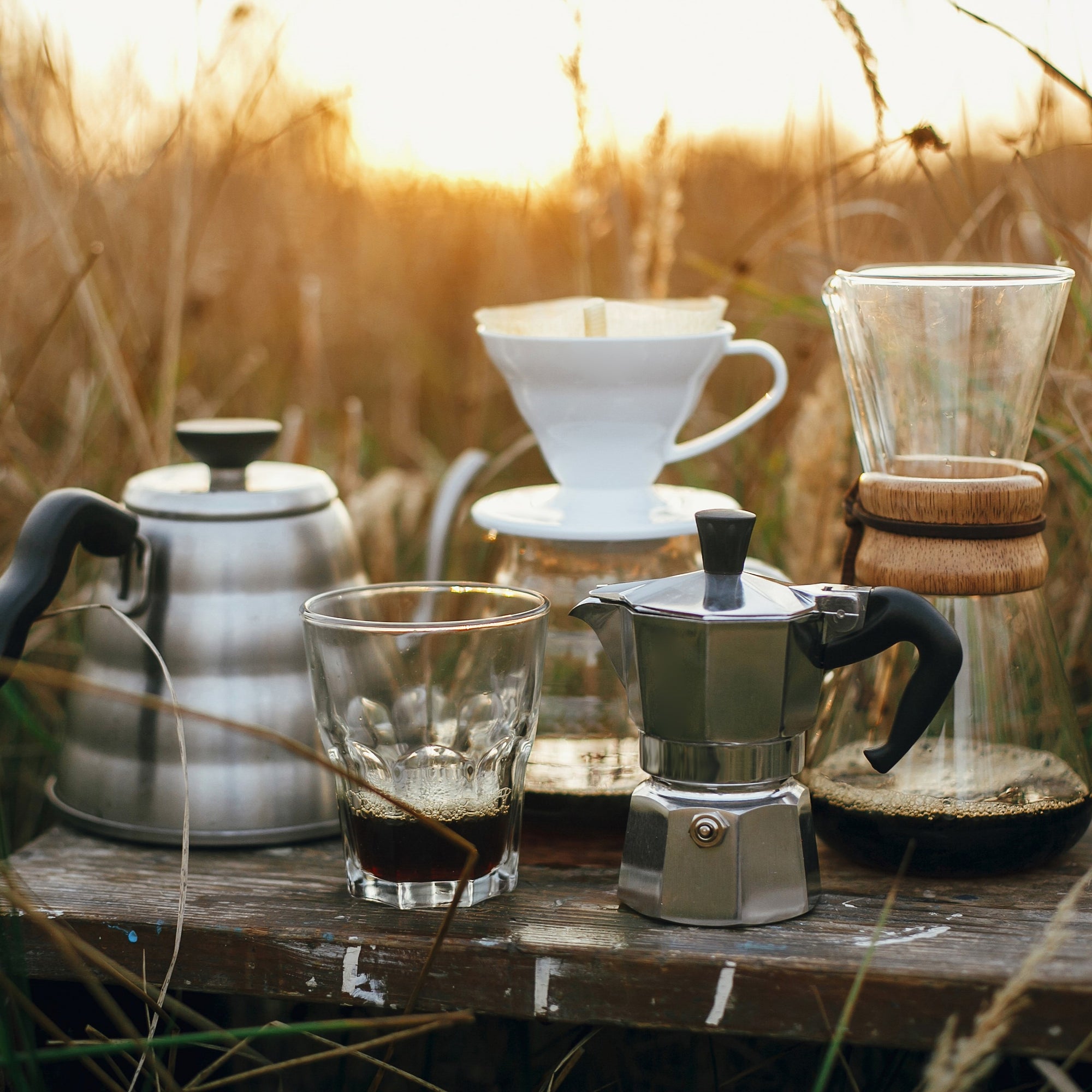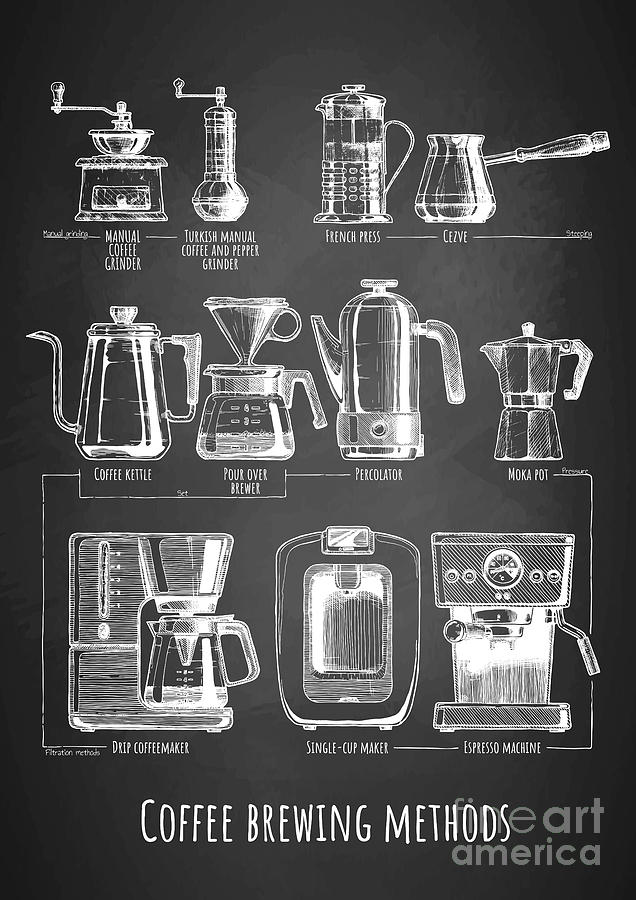Coffee Brewing Methods Debunked: From French Press to Cold Mixture
Coffee Brewing Methods Debunked: From French Press to Cold Mixture
Blog Article
The Science Behind Coffee Developing: How Temperature and Time Affect Your Beverage
Recognizing the science behind coffee developing discloses that temperature level and time are not simple variables yet critical elements that dictate the drink's taste profile and overall top quality. As we check out the nuances of these aspects, the concern occurs: how can one successfully equilibrium temperature and time to attain that best brew?
The Chemistry of Coffee Extraction
The chemistry of coffee removal explores the intricate processes that transform raw coffee beans right into the fragrant beverage delighted in worldwide. This improvement primarily includes the solubility of numerous compounds present in the beans, which are affected by factors such as work dimension, water quality, and the brewing method utilized.
During the developing process, warm water functions as a solvent, drawing out soluble compounds, consisting of caffeine, sugars, lipids, and acids, from the coffee premises. Each substance adds to the flavor account, aroma, and body of the final beverage. Acids are responsible for tangy and brilliant notes, while oils contribute to a rich mouthfeel.
The removal process is not uniform; various substances dissolve at various rates. The preliminary stages of brewing essence acids and sugars, resulting in an enjoyable level of acidity, while long term extraction can bring about anger as a result of over-extraction of unfavorable substances. Recognizing these chemical interactions is crucial for maximizing brewing techniques, as the balance between removal time and water temperature level can substantially affect the overall top quality of the coffee. Ultimately, mastering the chemistry of coffee extraction is vital to achieving a well-shaped and delicious cup.
Ideal Brewing Temperatures
Locating the right brewing temperature level is necessary for opening the full possibility of coffee flavors and aromas - coffee brewing methods. Study suggests that the optimum array for developing coffee exists in between 195 ° F to 205 ° F(90 ° C to 96 ° C) Within this array, the extraction process properly liquifies the preferable soluble substances in coffee beans, resulting in a tasty and well balanced cup
Developing at lower temperatures, such as below 195 ° F(90 ° C ), may cause under-extraction, yielding a weak and acidic brew with low-key tastes. Conversely, brewing at temperature levels going beyond 205 ° F(96 ° C) can cause over-extraction, producing a bitter and extreme preference as a result of the excessive dissolution of unfavorable substances, such as tannins.
Moreover, the perfect developing temperature can differ relying on the coffee bean type and roast level. For example, lighter roasts frequently gain from a little higher temperature levels to boost their intricate flavor profiles, while darker roasts might be better fit to lower temperatures to minimize resentment.
Eventually, preserving accuracy in brewing temperatures is crucial for attaining an unified balance of flavors, ensuring that every cup of coffee supplies a satisfying sensory experience.
Influence of Developing Time
Developing time plays an essential function in determining the flavor profile and overall quality of coffee. Shorter brewing times can result in under-extraction, leading to a weak or sour flavor, as not enough soluble substances are liquified.
Optimum developing time varies depending upon the method utilized and the work dimension of the coffee. For example, a French press generally calls for regarding four mins, while coffee removal is usually completed within 25 to 30 seconds. It is necessary to calibrate brewing time in combination with various other variables, such as water temperature level and coffee-to-water ratio, to attain the desired flavor account.
Recognizing the effect of developing time makes it possible for coffee enthusiasts to refine their brewing methods, eventually enhancing the sensory experience of their mug (coffee brewing methods). With mindful focus to this variable, one can unlock the complete capacity of the coffee, exposing its distinct characteristics and subtleties
Developing Techniques and Their Effects

As an example, approaches like French press and cold mixture enable for a much longer steeping time, resulting in a fuller body and robust taste as a result of enhanced removal of oils and soluble solids. Conversely, espresso developing utilizes high pressure and a shorter removal time, generating a concentrated shot that emphasizes intense flavors and a rich crema.
Pour-over methods, such as Chemex or V60, supply an even more controlled removal process, enabling the brewer to adjust circulation rate and water circulation, which can enhance brightness and clarity. On the other hand, percolation approaches cycle water with the coffee grounds several times, resulting in a more powerful, often bitter taste.
Last but not least, the usage of paper filters versus steel filters can also affect the last taste; paper filters generally yield a cleaner cup by trapping oils and fine particles, while metal filters allow even more oils to pass through, adding to a fuller mouthfeel - coffee brewing methods. Recognizing these subtleties can raise the coffee experience significantly
Tips for Developing Your Mixture
A well-executed mixture can transform also the easiest coffee into an impressive experience. To achieve this, attention to detail is important. Beginning with top quality, fresh roasted beans, as their flavor profile reduces over time. Grind the beans just before brewing to take full advantage of freshness, making sure the work size matches your brewing approach-- coarser for French press and finer for coffee.
Water quality plays a critical function; use filteringed system water devoid of pollutants. The ideal developing temperature ranges between 195 ° F and 205 ° F(90 ° C to 96 ° C ) Also warm can scorch the coffee, while as well trendy might under-extract flavors.
Timing is similarly vital. For immersion methods, soaking for 3 to five minutes is optimum, important source whereas drip techniques generally take about read the full info here five minutes. Explore brew times to locate your preferred strength.

Conclusion
In recap, the complex connection in between temperature level and time is vital in the coffee brewing process. Complying with optimum developing temperature levels between 195 ° F and 205 ° F, together with precise timing customized to each approach, makes sure the wanted taste account is achieved. Comprehending these scientific principles equips people to refine their brewing strategies, ultimately leading to a much more balanced and delightful coffee experience. Mastery of these elements is crucial for any type of coffee fanatic looking for quality in their beverage.
Understanding the scientific research behind coffee developing discloses that temperature and time are not plain variables yet crucial aspects that determine the beverage's taste account and general high Get More Info quality. Understanding these chemical communications is vital for optimizing brewing methods, as the balance between extraction time and water temperature can substantially influence the total quality of the coffee.Developing time plays a crucial function in figuring out the flavor account and general high quality of coffee. By concentrating on these elements-- bean high quality, grind dimension, water temperature, soaking time, and proportion-- you can raise your coffee developing process, resulting in a consistently superior mug.
In recap, the intricate connection between temperature level and time is paramount in the coffee developing process.
Report this page